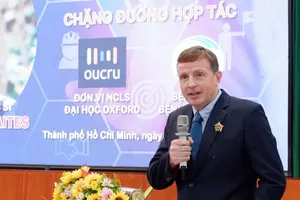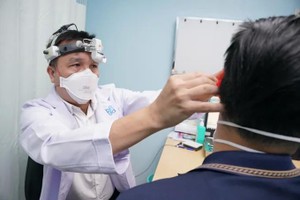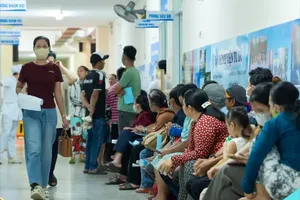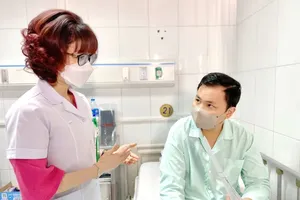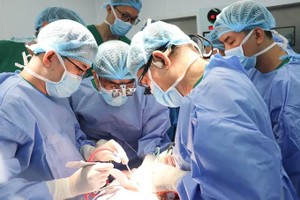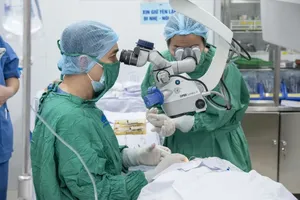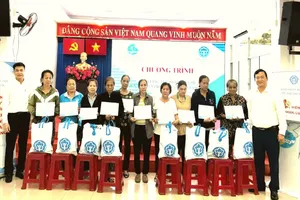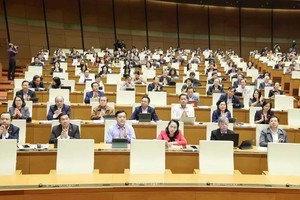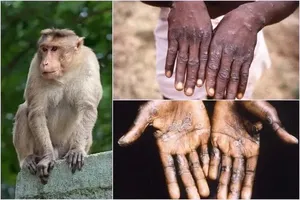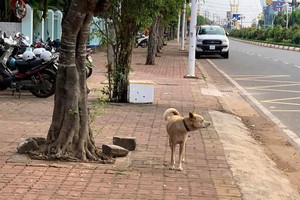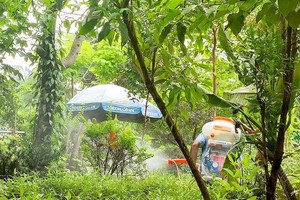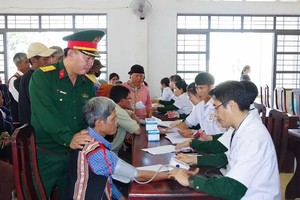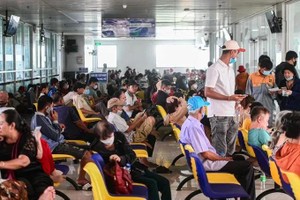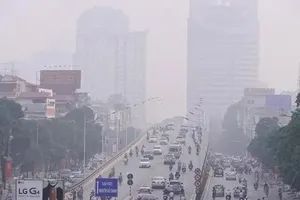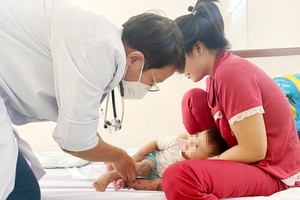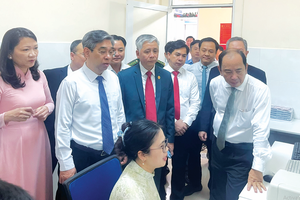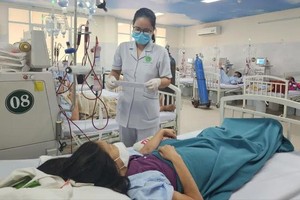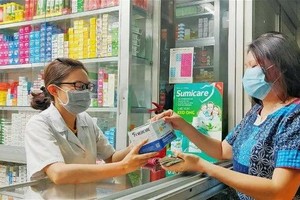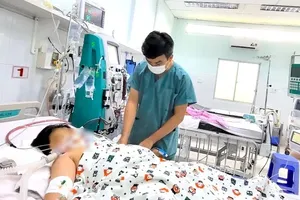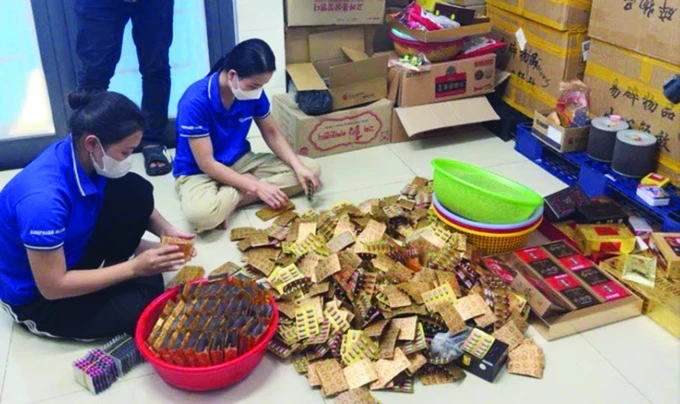
In early 2025, the police force of HCMC took down a substantial counterfeit goods network specializing in traditional Eastern medicine adulterated with Western pharmaceuticals. The functional agencies identified Ngo Kim Dieu and Nguyen Thi Ngoc Huong as the masterminds, having established and utilized the legal entities of Kingpharm Co. Ltd. and Kien Lam Co. Ltd. as fronts to conceal their illicit activities.
This network manufactured counterfeit medications purportedly treating musculoskeletal conditions, rhinitis, haemorrhoids, gastric ailments, cardiovascular issues, and neurological disorders. Each stage of production was executed at separate locations, with personnel consisting of family members and relatives of the ringleaders to evade detection by law enforcement.
During the search, the authorities seized 1,164 cartons of finished counterfeit products, various raw materials, 1,600kg of powdered ingredients, and five sets of machinery. Eleven trucks were required to transport the seized counterfeit medications and raw materials to headquarters.
The suspects confessed to printing dozens of different brand names on the counterfeit drug packaging, falsely attributing them to shell companies in Singapore or Malaysia to exploit consumers' preference for foreign products and facilitate sales. Twenty-two individuals have been charged and detained in connection with this counterfeit drug operation.
This case has reignited anxieties surrounding the persistent issue of counterfeit and substandard drugs in the domestic market. In 2024 alone, the Drug Administration of Vietnam (DAV – under the Ministry of Health) issued several announcements regarding the discovery of counterfeit Theophylline 200mg and Cefixime 200 antibiotics.
In HCMC, District 10 police dismantled a counterfeit drug production and distribution ring headed by Lu Phu Tham (44 years old), operating since early 2022. This operation yielded 39 boxes containing 6,022 counterfeit bottles, lacking origin documentation; over 100,000 counterfeit blister packs, boxes, bottles, and ampoules; more than 35,000 counterfeit packaging boxes, stamps, and labels; and equipment used in the counterfeit drug manufacturing process.
The proliferation of online commerce has further complicated the production and trade of counterfeit and substandard drugs. Most recently, the police force in Nam Dinh City (Nam Dinh Province) apprehended 40 individuals involved in a fraudulent scheme selling medications and beauty products on social media. These individuals posed as doctors specializing in musculoskeletal conditions, promoting treatment packages targeting women and individuals with underlying or chronic illnesses.
Statistics from WHO in 88 nations reveal that approximately 10 percent of medications circulating in low- and lower-middle-income countries are counterfeit. In Vietnam, according to the Ministry of Health, the proportion of counterfeit drugs has decreased from over 7 percent in 1991 to below 0.1 percent in recent years. However, the discovery of ongoing counterfeit drug production and distribution operations underscores the continued cause for concern.
Le Quoc Hung, MD PhD, Head of the Tropical Diseases Department at Cho Ray Hospital, emphasized the severe consequences faced by patients who consume counterfeit medications. Beyond incurring financial losses for ineffective treatments, patients risk disease exacerbation and serious complications. For chronic conditions such as musculoskeletal disorders, diabetes, and cardiovascular diseases, counterfeit medications can worsen the condition due to the absence of appropriate treatment.
“Elderly patients with multiple comorbidities absolutely require a doctor’s prescription, as each condition necessitates different medications, increasing the risk of detrimental drug interactions. This risk is further amplified with counterfeit drugs. Therefore, patients should abandon the practice of self-medication and seek medical consultation and prescriptions from qualified physicians,” stressed Dr Le Quoc Hung.
However, distinguishing between genuine and counterfeit drugs is not possible through visual inspection alone and requires laboratory analysis at testing facilities. Within healthcare facilities, all medications undergo rigorous evaluation regarding origin and procurement according to current regulations, thereby ensuring a higher level of safety and quality assurance.
Beyond the regulatory responsibilities of authorities, the public should seek medical consultations at healthcare facilities to obtain prescriptions and use medications as directed, strictly avoiding purchasing medications based on word-of-mouth recommendations or social media advertisements.
According to Assoc Prof Dr Pham Khanh Phong Lan, Chairwoman of the HCMC Pharmaceutical Association, consuming counterfeit or substandard medications exposes individuals to significant health risks, potentially even resulting in death. Therefore, any individual knowingly manufacturing counterfeit drugs is committing an act equivalent to intentional mass murder.
